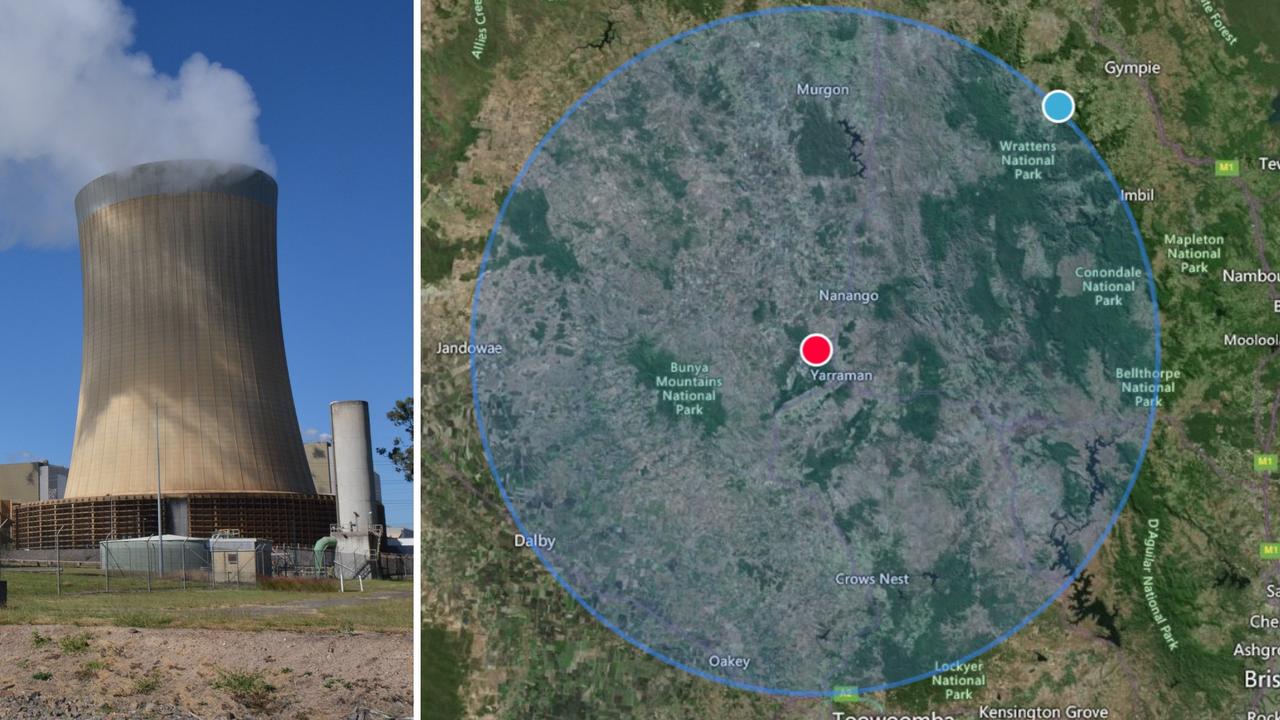Toowoomba nuclear: Tarong power plant proposal questioned in new report by Qld Premier Steven Miles’ department
A proposed nuclear power plant just a few hours from Brisbane could have wide-ranging impacts on thousands of people and regional centres, if US guidelines were followed in a worst-case scenario.
Toowoomba
Don't miss out on the headlines from Toowoomba. Followed categories will be added to My News.
More than 5000 people would need to be ready to evacuate if an accident occurred at a hypothetical nuclear facility north of Toowoomba, according to a new state government report.
Premier Steven Miles’ department tabled the “rapid analysis” research document at parliament estimates on Tuesday, which also suggested farmers as far away as Highfields, Meringandan and Dalby could be impacted by a nuclear power station just north of the Toowoomba region.
It comes four weeks after the federal Coalition announced its ambitious and largely uncosted plan for seven reactors across Australia, including one at the current Tarong coal-fired plant 10km from Yarraman.
Along with highlighting legislative challenges, costs of building and decommissioning plants and exploring cost comparisons against other energy sources, the department argued thousands of people would need to prepare to evacuate from around Tarong if exclusion zones were based on a nuclear country like Finland.
The immediate population of towns like Yarraman, Nanango, Maidenwell and Tarameo is roughly 5400.

In another impact that has raised alarm bells with the Queensland Conservation Council, the document provided research suggesting a hypothetical Tarong plant would pose multiple problems for the region’s water supply as the effects of climate change worsened.
“In operation, nuclear plants generally withdraw (divert from the ground or another source) and consume (remove via transpiration, evaporation or embed into products) more water per unit of electricity produced than coal plants because nuclear plants operate at a lower temperature and turbine efficiency, and do not lose heat via smokestacks,” the report said.
“Further analysis is needed to understand whether there is sufficient water to meet the requirements of nuclear power plants at Tarong and Callide and potential impacts on water security and drought resilience, and water availability for other uses such as drinking water and agriculture.
“For example, Tarong power station accesses Lake Wivenhoe as a supplementary water source, (which) is the main water supply for Brisbane and Greater Ipswich.”
Wivenhoe is also Toowoomba’s supplementary water source in the event of extreme drought.
Notably for farmers, the department said an incident at a facility in Tarong could have impacts on the Great Artesian Basin, which was a “vital resource for 180,000 people, 7600 businesses and 120 towns”.
QCC director Dave Copeman said the 2400 farms within an 80km radius of Tarong (based on US zoning) would also need to develop plans for their crops and livestock in the event of an accident or meltdown.
“In that 80km zone, the requirement is farmers need to undertake preventive measures, delay and withhold shipments – all of these things need to be built within the planning process,” he said.
“We don’t know what will apply to Australia, but it’s important the Coalition explains it.
“In Fukushima (meltdown in 2011), they had similar zones, but then they had to impose new quarantine zones based on the actual contamination.
“The spread went well beyond the 20km zone, we saw impacts beyond 50km.”
Nationals leader David Littleproud dismissed the concerns around agricultural impacts laid out by federal Labor earlier this month.
Other barriers outlined in the state government’s report included existing state-based laws, which argued Queensland must go to a vote of the people about whether they support the construction of nuclear facility, on top of federal legislation that would need to be wound back.
The department also pointed to separate independent research showing the cost of building nuclear power blew out by 204 per cent on average, compared with 200 per cent on the Olympics (which Brisbane is hosting in 2032) and 186 per cent on hydro-electric dams.









